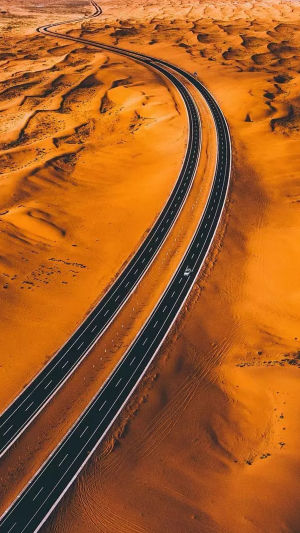The inauguration of the Beijing-Xinjiang Expressway, a 2,540-kilometer marvel that traverses the northern desert and seamlessly connects multiple tourist havens.
This expressway, stretching from Beijing to Xinjiang, unfolds a picturesque journey through six provinces, autonomous regions, and municipalities—Beijing, Hebei, Shanxi, Inner Mongolia, Gansu, and Xinjiang—establishing its status as the world's longest desert highway.
In this comprehensive guide, we delve into the breathtaking landscapes, and must-visit attractions, along the Beijing-Xinjiang Expressway, offering a detailed roadmap for self-driving enthusiasts.
<h3>Overview of Beijing-Xinjiang Expressway:</h3>
The Jingxin Expressway, designated as G7, stands as the second lifeline out of Xinjiang, following the Lianhuo Expressway.
This expressway winds through Beijing, Zhangjiakou, Ulanqab, Hohhot, Baotou, Linhe, Ejina Banner, Hami, Turpan, Urumqi, and more, threading through the Northeast, North, and Northwest of China.
By shortening the distance from Beijing to Urumqi by over 1,300 kilometers, the expressway has become the most convenient conduit linking Beijing to the northwest regions of Inner Mongolia, northern Gansu, and Xinjiang.
Emblematic of the nation's "One Belt, One Road" initiative, this expressway stands as a landmark project.
<h3>Must-Visit Attractions Along the Way:</h3>
<h3>2.1 Prairie Sky Road:</h3>
Situated at the junction of Zhangbei County and Chongli District, the Prairie Sky Road serves as a vital artery connecting Chongli Ski Area, Chicheng Hot Spring Area, and Zhangbei Grassland Scenic Area.
Stretching 132.7 kilometers, this "Heavenly Road" boasts scenic beauty, with rivers, mountains, meadows, and grazing livestock composing a captivating tableau.
<h3>2.2 Dajingmen:</h3>
Zhangjiakou, hailed as the "Great Wall Museum," boasts the largest concentration of Great Walls and the longest historical span. Dajingmen, one of the four major gateways of the Great Wall, erected in the first year of Shunzhi in the Qing Dynasty, stands as a magnificent representation of Great Wall culture.
<h3>2.3 Huitengxile Grassland:</h3>
Ulanqab's expansive territory is adorned with the Huitengxile Grassland, an alpine meadow perched at an altitude of over 1,800 meters. Dotted with lakes, this grassland exhibits majestic splendor, echoing the elegance of the Jiangnan water town.
<h3>2.4 Dazhao Temple:</h3>
Built in 1580, Dazhao Temple in Hohhot. As the earliest Lamaist temple constructed in Hohhot, its architectural synthesis of Han traditional temple forms is captivating. The temple houses a solemn silver statue of Sakyamuni, making it an indispensable historical relic.
<h3>2.5 Nalin Lake:</h3>
Nalin Lake, situated in Bayannur Nongken Nalintaohai Farm, stands as the largest freshwater lake in the northwest region and a crucial wetland and bird breeding ground. Boasting vast waves, the lake invites summer visitors to explore its scenic beauty via speedboat, providing a tranquil escape into nature's splendor.
<h3>2.6 Tengger Desert:</h3>
The Tengger Desert, China's fourth-largest, spanning 30,000 square kilometers, presents a unique natural tapestry with dunes, lake basins, salt marshes, grassy beaches, and pristine ecological lakes.
<h3>Conclusion:</h3>
The inauguration of the Beijing-Xinjiang Expressway ushers in a new era for self-driving adventurers seeking to traverse the desert expanses of the north, connecting sought-after tourist destinations.
This Silk Road journey promises an exploration of the grandeur of northern landscapes, an immersion in diverse regional cultures, and an indulgence in unique culinary delights.
Gather your companions, embark on a self-driving odyssey, and let the Beijing-Xinjiang Expressway be your trusted northern travel companion.





